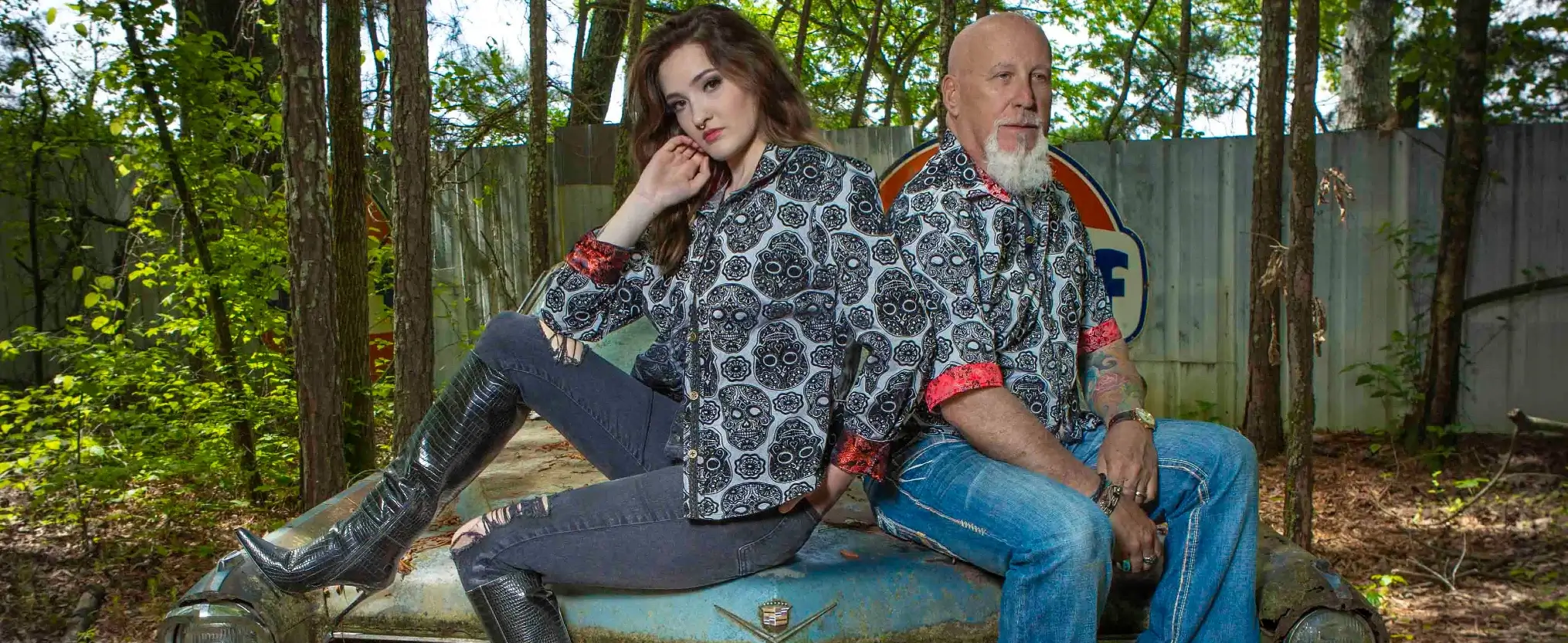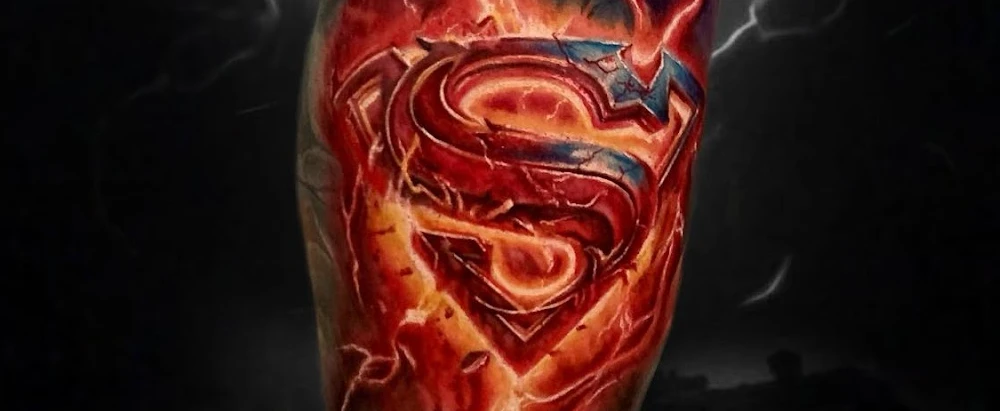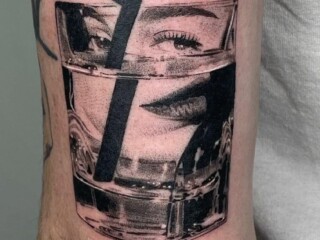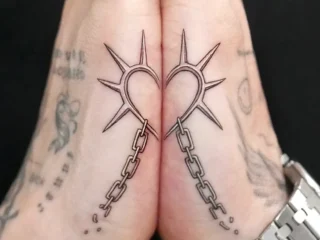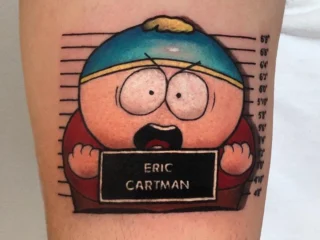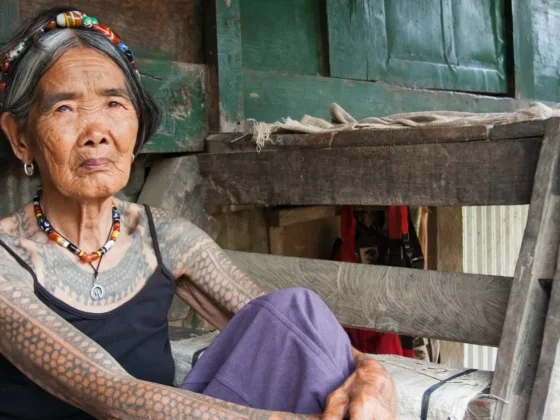Inked Mag Staff
May 7th, 2015
Inked Answers: Dry Healing vs. Wrap Healing Your New Tattoo
J. Michael Taylor is a tattoo artist and the owner of Black Amethyst Tattoo Gallery in St. Petersburg, Florida. Dry Healing vs. Wrap Healing Your New Tattoo: Which is Right…
J. Michael Taylor is a tattoo artist and the owner of Black Amethyst Tattoo Gallery in St. Petersburg, Florida.
Dry Healing vs. Wrap Healing Your New Tattoo: Which is Right for You?
Opinions are like art… different strokes for different folks. But some opinions are a serious matter, like when it’s time to heal your newest tattoo. Whose opinion do you listen to? (Pick one.)
1. Your friend who once had a guy tell him that his friend’s girlfriend used a cocoa butter and lube mixture, wrapping on alternate days, for ten weeks.
2. Whatever Siri says, as long as it agrees with Ask Google.
3. That hot chick who foamed your latte and looks like she’d be worth getting to know, who may or may not have ink. (You’ll know once you get to her place.)
4. Your tattoo artist.
If only high school finals had been that easy.
Here’s the rub, so to speak: Even tattoo artists have differing opinions about dry healing vs. wrap healing. So let’s review the basics of how your latest wearable art can be healed. Then we’ll talk about how to choose the best method for you:
Dry Healing Tattoos
1. Your artist will bandage you when finished. Leave your bandage on for 1-2 hours. After removing the bandage, clean your tattoo using warm water and mild, antibacterial cleanser to rinse off the shiny coat which might have formed on the surface of your tattoo. Pat dry and leave it to air.
2. Keep the tattoo unwrapped throughout the day, and wrap it just before going to sleep for the first three nights only. You can use plastic wrap for rewrapping, making sure your new tattoo is completely dry before you rewrap. Rewrapping your tattoo during the first three days is important since your body tends to lose a lot of fluid or lymph in the initial days. This lymph oozes from your tattoo and sticks to your skin and sheets making your skin itchy on the following day. Rewrapping your tattoo during the first three nights will reduce skin irritation and promote quicker healing.
3. In the day time, apply a mild moisturizer (nothing with scent or additives) or a tattoo healing ointment to your tattoo. Keep lightly applying the ointment until your tattoo peels after three to seven days. Once your tattoo fully enters the peeling phase, stop applying the ointment. If bubbles form on your tattoo, it’s due to excess moisture – stop applying the ointment and let your tattoo dry and peel on its own.
4. Protect that baby! Don’t soak in the tub, pool, hot tub, ocean, lake, stream or keg of beer. Avoid direct sun exposure, dirt, anything you’d do to keep an open wound clean. Don’t scratch. Even if it feels like tiny demons dancing just under your skin.
Wrap Healing Tattoos
Less conventional than traditional dry healing, wrap healing is most often recommended for larger tattoos.
1. Leave your bandage on for at least three hours but no longer than 12. Clean your tattoo with mild antibacterial soap and water. Air dry the new tattoo for 15 minutes minimum, making sure it’s completely dry.
2. Wrap up the tattoo with a plastic wrap. Do not use any moisturizer, ointment or lotion.
3. Wash your new tattoo every four to six hours. Sweat is your enemy, and it’s hard not to sweat when you are wrapped like a microwaved baked potato. After washing, pat dry with a very clean cloth, then rewrap with fresh plastic. That’s the drill for at least three days, and up to five days.
4. Your new tattoo will start to peel within those three to five days, flaking like a sunburn. That’s when you know to stop wrapping. Treat the dry and itchy skin with a no-additive moisturizer, and no scratching! Your skin texture will return to normal as your tattoo heals.
Moisture rashes happen when there is too much moisture left on skin that’s wrapped. Ingrown hairs can also be uncomfortable during healing. The most important things with either healing method is to keep it clean, be consistent, and don’t be shy about contacting your tattoo artist with any questions. It’s a guarantee that however weird your question seems to you, someone has asked something weirder.
So how the effing bleep do you decide which healing method is better for you or a particular tattoo?
Well, unlike the multiple choice quiz above, it’s not always a simple answer. No matter how few or many tattoos you already have, there are a lot of variables: your skin condition in general, what your immune system is up to at the moment, your age, how much melanin you naturally have, the location of the new tattoo, your daily activity and routines…
The best answer is that your new tattoo is a collaboration. Work closely with your artist (it doesn’t get too much closer than permanently transforming your skin, now does it?) to achieve the best possible design, placement, execution and healing. You may start one healing method and need to switch. You may finish one method that works for you 100% of the time. The key is to communicate with your tattoo artists just as closely after your new tattoo as you did before and during your new tattoo.
Tattooing has been around for thousands of years. With a plan for proper healing, there’s no reason your new tattoo can’t last at least that long!

Editor's Picks
Bridging Classical Art and Modern Tattooing
Esteban Rodriguez brings the discipline of classical fine art to the living canvas of skin, creating hyper-realistic tattoos that merge technical mastery with emotional depth.
Show Your Ink Fashions Brings Custom Style to Tattoo Culture
Show Your Ink Fashions creates custom shirts designed to showcase your tattoos as wearable art, blending fashion with personal expression.
The Ultimate “Superman” Tattoo Roundup: Just in Time for Superman’s Return to Screens
With Superman’s big return to theaters, fans are revisiting some of the most iconic ink inspired by the Man of Steel.



